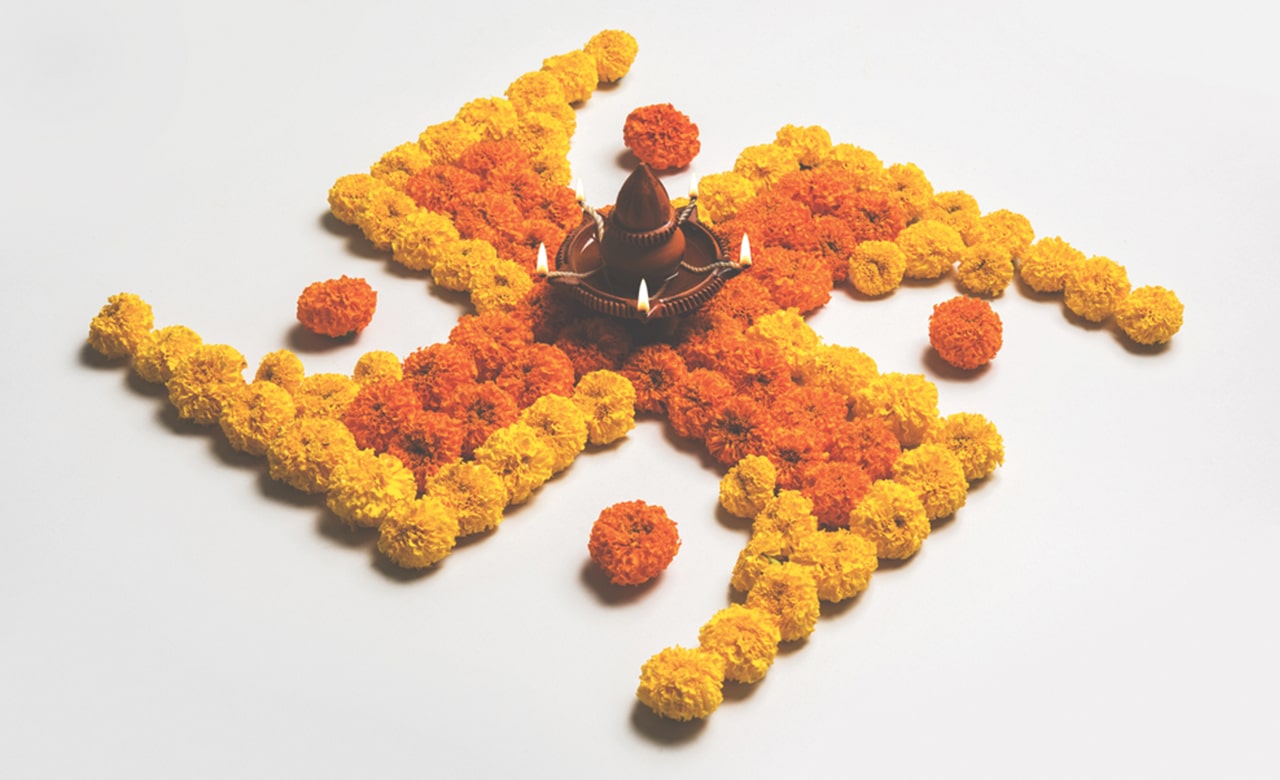
Informative
Understanding Swastika – The Ancient Symbol.
The word Swastika comes from two Sanskrit words: Su, which means “good” or “auspicious,”; and Astik, meaning “it is so” and thus symbolic of abundance, prosperity, peace, welfare, and happiness. In simple terms, the meaning of Swastika is auspicious and well-being.
The Swastika is a symbol of our quest for welfare. In religious scriptures, it represents peace and prosperity—a reflection of our humanitarian spirit. Swastika is described in Hindu sacred scriptures as blessed, auspicious, or virtuous; it is written that the symbol of the Swastika contains the welfare of the whole world in all directions, that is, the welfare of the entire world.
Since ancient times, apart from Hindu culture, Swastika has also been very important in many other cultures. The symbol of Swastika is unique in itself, which contains many deep secrets of the universe. Let’s understand the importance of Swastika.
Nature of the symbol
Mainly Swastika is formed with six lines. To make a Swastika, the cross sign is made with two straight lines that intersect each other, a line forming a right angle from the corners of its four arms to the right (southward), and a Swastika is made. If the lines in Swastika turn towards our right (direction of clockwise movement), it is called Dakshinavarti Swastika. The lines turning backward to our left (anticlockwise/opposite to the direction of clockwise motion) are called Vamavarti (Left handed ) Swastikas. Dakshinavarta and Vamavarti Swastikas are considered symbols of masculinity and femininity.
In Sanatana, the Swastika has been used in the southern-facing direction traditionally. In exceptional circumstances, cultures, or traditions, the left-handed Swastika has also been used. But it can be inauspicious and harmful. Therefore, drawing such a Swastika should only be done for a short time in particular circumstances.
In ancient scriptures, Jyotirlinga is considered the universe’s origin in the form of Lord Shiva Shakti. There has been a deep study and contemplation of scholars on this subject that the right Swastika is the symbol of masculinity and the left is the symbol of femininity. Similarly, the vertical line of Swastika symbolizes the universe’s origin, and the horizontal line signifies the universe’s expansion.
The center point of the Swastika is also considered to be the navel lotus of Lord Vishnu, from where the world is believed to have originated. The 4 points used in the Swastika are symbols of the 4 directions. Some scholars consider it a symbol of the unity of the 4 Varnas, while others consider it a sign of the universe. Because the lines drawn at the four ends of the Swastika do not touch any point because they are shown as infinite as the symbol of the ever-expanding universe.
In Indian culture, the Swastika symbol is considered to be the symbol of Ganesha, Vishnu, Surya, the world cycle, and the entire universe. The four points in its shape are believed to be the abode of the Divine Mother Gauri, Earth, Kurma (Tortoise), and Eternal Divinity. Some scholars have considered Swastika as the form of the Sudarshan Chakra (disc) of Lord Vishnu. In this lies the purpose of humanity’s power, progress, and inspiration.
According to the Rigveda, the Swastika symbolizes the sun, and the four arms of the Swastika represent the four directions.
Swastika is considered in Rigveda as the bestower of the desired fruit of the sun, the benefactor of the whole world, and the one who gives immortality to the gods. In Vayavi Samhita, Swastika is considered a form of Brahma Himself.
Some scholars consider the four arms of the Swastika to be the symbol of the four Vedas (Rigveda, Samaveda, Yajurveda, and Atharvaveda) or the sign of the four yugas (Satyug, Treta, Dwapar, Kalyug), the symbol of the four ashrams (Brahmacharya, Grihastha, Vanaprastha, and Sannyas). , the symbol of the four Purusharthas (Dharma, Artha, Kama, and Moksha), the character of the unity of the four Varnas (social categories like Brahmin, Kshatriya, Vaishya, and Shudra). These arms are also considered the four faces, four hands, and four Vedas of Brahma as well…
Power of Swastika
Just as Shri Ganesh is worshiped first in all auspicious beginnings, similarly, the symbol of Swastika is made in every auspicious event such as fast, festival, and worship. The symbol of Swastika is marked with turmeric and Kumkum (vermillion) on the worship plate and on the walls of home-shop-office, etc. The primary purpose behind this is to remove negative energy from our surroundings because Swastika is considered a symbol of positive energy.
It is very promising to mark the symbol of Swastika even at the place where money is kept, such as a cash box, safe, Almirah, etc. It is believed that it protects and increases wealth and protects from negative powers.
Swastika is considered to be the symbol of Lakshmi, the goddess of wealth, and Ganesha, the god of wisdom. The symbol of Swastika is used for the worship of Agni, Indra, Varuna, and Soma, the presiding deities of the four directions. The character of Swastika should be done only at auspicious places, avoiding making or applying it at inauspicious areas like the toilet and bathrooms to prevent negative results.
In the north direction of a business establishment, marking Swastika with turmeric and worshiping it proves to be very beneficial, while Swastika marked with turmeric pacifies the enemies. Putting a Swastika made out of mango wood at the house’s entrance invites happiness and prosperity. Applying a mango wood Swastika in the corner of the house is known to reduce Vastu dosh.
Prosperity arrives in the house by making a Swastika in the worship place. In the place of worship of the house or in the house altar, keeping five types of grains on it and lighting a lamp of pure ghee (clarified butter), the desired Sankalpa is fulfilled quickly.
Suppose the Vigraha of the Ishta Deva is established on the Swastika in the worship place of the house. In that case, the desired wishes are fulfilled soon. Drawing a Swastika with Kumkum or vermilion with the index finger in the worship place of the house stops insomnia and nightmares.
Different benefits can be obtained easily by making Swastika from different substances. With the proper use of Swastika, you can achieve wealth, happiness, peace, high position, prestige, honor, respect, success in work, health benefits, prevention of Vastu defects, prevention of home troubles, protection from enemies, etc.
We hope you enjoy reading about the meaning and practical use of Swastika. Please subscribe to our mailing list to stay connected and receive spiritual information.
In case of any queries, please write to us at info@chamundaswamiji.com. You can check out our YouTube channel Chamunda Swamiji where you can learn Tantra, Mantra, Yantra, and Meditation from His Holiness Shri Chamunda Swamiji. If you seek to learn Shakti Kriya, please register with us, and we will get back to you.
Post a Comment
-
Subscribe to Our Blog
-
Categories
-
Popular Articles
- Dead moth in the house. What universe is trying to tell you?
- Spiritual Meaning of Moth
- Vivah Bandhan Curse – What Is It and How to Spiritually Heal It.
- The Dasa Mahavidyas
- What are Beej Mantras?
- Tripura Sundari | The Dasa Mahavidya
- Maa Bhuvaneshwari | The Dasa Mahavidyas
- The Five Shades of Tantra
- Ramakrishna Paramhansa – The Man who almost became a Woman
- Maa Chinnamasta | The Dasa Mahavidyas



